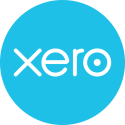Series I US Savings Bonds-A New Twist on an Old Idea
By: James Castro
Remember those old Series E bonds that your grandmother gave you…You know a $50 bond that is worth $50 after 12 years or so? Not too exciting, right? Well, the government now offers Series I savings bonds that are a little more flexible and in general pay a higher variable rate.
If you have some funds in savings and are looking for a higher interest rate, Series I savings bonds may provide a unique opportunity to increase your yield. Series I bonds are available to individuals and pay a hybrid (fixed plus variable) rate of return. The interest is not taxable for state tax purposes. You can elect to pay taxes each year OR defer tax recognition until you cash the bonds in.
What are Series I Bonds?
Series I bonds are issued by the United States government and (per the Treasury Direct website) offer a low risk savings opportunity.
How do these bonds pay interest?
These bonds provide a fixed and variable (inflation) rate of interest so there is some inflation protection built into them. The fixed rate is set every 6 months and never changes during the life of the bond. The variable rate changes every 6 months and is set at 2x the change in the CPI as calculated by the government.
The yield on these bonds as of September 2022 is 9.62%, consisting of a fixed rate of 0% and a variable rate of 9.62%.
Are their limits to how much I can invest?
Each individual can invest up to $10,000 per year (minimum $25) in electronic Series I bonds. Additionally, you can utilize your tax refund to purchase up to another $5,000 of paper bonds (minimum $50).
What is the minimum and maximum amount of time you have to invest in these bonds?
The bonds pay interest for a maximum of 30 years. The minimum term of ownership is one year. If the bonds are cashed in before 5 years the prior 3 months interest will be forfeited.
How do I buy these bonds?
You can acquire the electronic bonds directly by going to www.treasurydirect.gov. You set up your account at the website and enter your bank information to acquire the bonds. You can also use your tax refund to acquire paper bonds.
You can not acquire these bonds at your local bank.
For more information and a list of FAQs go to www.treasurydirect.gov







